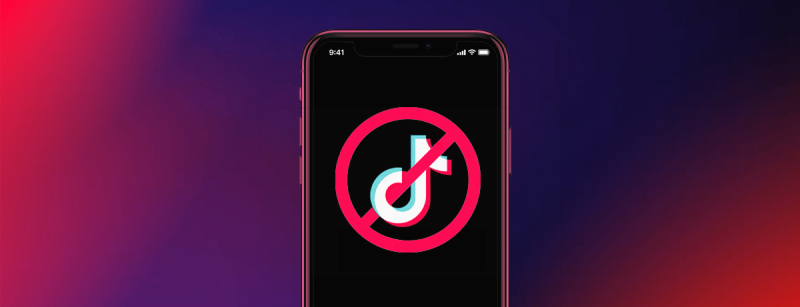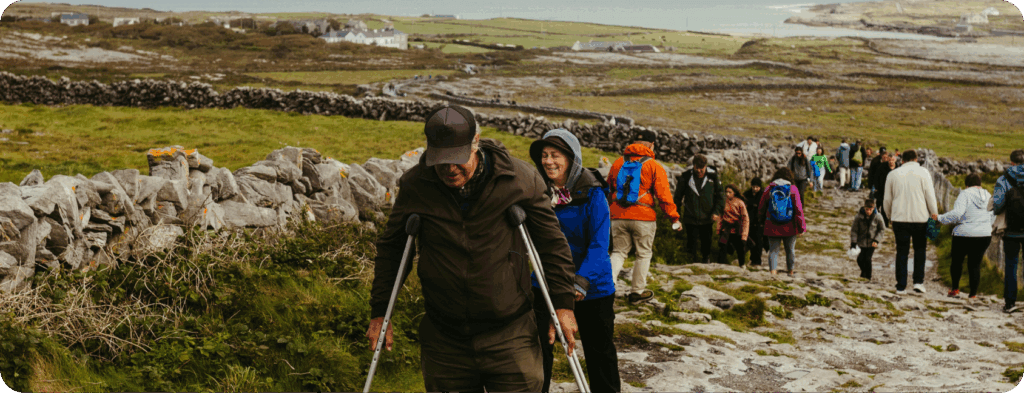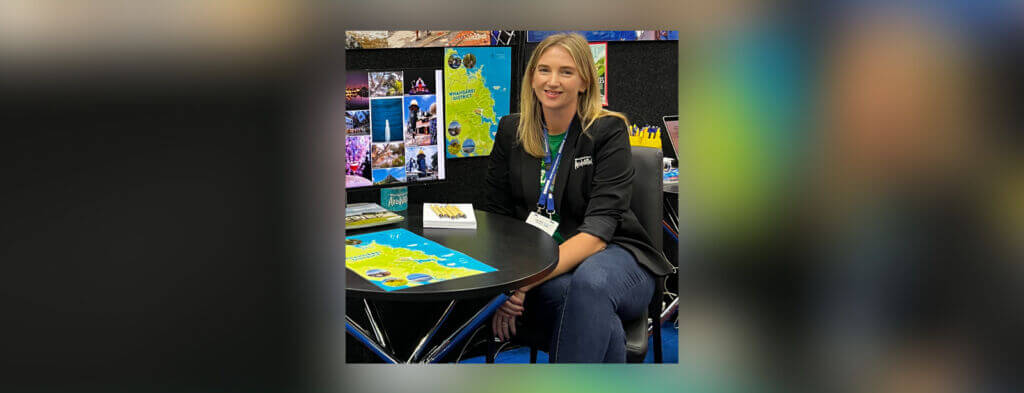
Take a look at this photo.

Do you recognize it? 🤔
Probably not. But the folks over at BuzzFeed sure will. It was taken in 2013 by Idaho photographer Kai Eiselein and posted to his Flickr account. And then BuzzFeed used it in one of their viral-worthy listicles.
When Eiselein found out—he filed a lawsuit for a whopping $3.6 million.
So, how did BuzzFeed land itself in such a mess?
Simple. It didn’t ask Eiselein for permission to share his content.
It’s a scenario that happens every day on social media platforms. Brands share a reel or retweet user-generated content (UGC) without asking for permission from content creators. As a travel marketer, you risk crossing into illegal territory if you repost someone sunbathing or enjoying a cocktail at your resort without obtaining UGC content rights first.
In this article, we’re going to take a deep dive into UGC, how travel marketers can use it to their advantage—and how to stay out of any legal trouble while doing just that!
Let’s dive in 👇
What is UGC?
User-generated content (UGC) is original content created by someone and shared on their social media channels or website.
UGC can be anything from photographs and images to videos, reels, reviews, and product reviews. A travel marketer can leverage rights-approved UGC across socials (after sending a request message of course!) to boost awareness and fill in any content gaps in their workflow or to organically connect with their audience.
The data backs this up.
According to The Sprout Social Index™ 2022, 51% of customers like to see a brand share social posts across marketing channels about their products or services. Another 34% prefer authentic, less produced videos… which is the perfect recipe to take advantage of UGC.

For travel marketers, UGC can be a treasure trove of (content) goodies. By partnering with people who are enjoying their holiday or experience with your travel brand, their perfectly angled photograph or drone shot can be an ideal way to show off your destination in a variety of marketing campaigns.

One brand that runs a UGC marketing masterclass is GoPro. The camera manufacturer’s social networks are overflowing with UGC thanks to regular competitions and events. Just look at the hashtags from its recent #GoProCreatorSummit 👇

GoPro then gets permission from its happy customers to use these images and videos on its feed, and voilà… an instant collaboration (and connection) with its audience is formed:

However, with all of the upsides of UGC, sharing it without permission can land you or your company in hot water with legal teams. Here are some important caveats you must know about before you hit that share button 👇
What Are UGC Rights? (+ the Consequence Of Mismanaging Them)
UGC rights are the legal ownership and permissions associated with user-generated content
As a travel marketer, it’s super important to understand the ownership of any piece of content before you use it or share it. When using any UGC, travel marketers should:
- Track down the owner of the original content
- Obtain explicit consent from them before using any of their UGC.
- Give proper credit to the original creator, like tagging their handle or including their name in a caption
This is where rights management with UGC comes into play.
UGC rights management is when a request is made to a content creator, influencer, individual, or other brand to use their content. Obtaining this permission and setting rules around how the content will be used (like attribution and monetization) is the best way to prevent copyright infringement, protect the content creator and most importantly—protect your brand.
Here’s the catch: UGC shared on social media channels isn’t automatically public property.
There’s a super common misconception that anything shared on platforms like Twitter or Instagram falls under Fair Use and can be used by everyone—that’s false. Apart from some rare exceptions, posting content that’s not your intellectual property can open you up to copyright infringement and penalties worth anywhere from $750 to $150,000.
Photo giant Getty Images learned the hard way that it pays to do your research.
After the Haiti earthquake in 2010, the AFP purchased photographs of the scene from a resident and later sold them to Getty. The problem was the resident didn’t actually take the images—they scraped them from the Twitter feed of the original photographer, Daniel Morel.

Morel then sued Getty for using his images without consent. Although the matter was settled out of court (for somewhere between $20,000 and $200,000), it forced Twitter to change its terms of service to remind users they own their content—nobody else.
Heck, even celebrities like Gigi Hadid and the Kardashians have been sued for sharing photos without consent (Kim Kardashian has now hired her own personal photographer to have full rights to all the photos she shares.)
The bottom line is people own their content. There is no way to legally repurpose UGC without permission. Before hitting share—you must always ask.
So, what does this all mean for travel marketers, and how can you still use UGC effectively across your socials? 🤔
How To Navigate UGC Rights As A Travel Marketer
We are a population of Tik-Tok lovin’, Instagram scrollin’, Twitter retweetin’… well, you get the picture.
We just love spending time online—especially looking at other people’s content. One study found Millennials spend over 5.4 hours per day looking at UGC, and it’s the format they trust the most. In fact, 86% of millennials think UGC is “usually a good indicator of a brand’s service or quality” and it influences what products or services they buy.
For travel marketers, the opportunities around using UGC are huge because 60% of leisure travelers use social media to post vacation photos and videos when they travel. Download our free UGC guide to learn how to source, use, and manage user-generated content for more impactful destination marketing.
UGC doesn’t just give an authenticity boost, it showcases real travel experiences from real people. And it’s this type of content creation that creates a connection with an audience. You may not have visited that amazing restaurant in San Sebastian or been on the unforgettable hike through Peru—but a creator has. And they’ve shared their experience online.

An example of leveraging UGC for a feature article.
There’s no doubt it makes sense for travel marketers to leverage UGC—but it must be managed properly. The task of obtaining rights to UGC requires you to always follow an important checklist:
✔️Permission. You should have a solid request process or rights management solution to clearly state what you will use the content for and how it will be shared, unless you want to deal with legal issues
✔️Agreement. A clear agreement between you/your brand and the original creator that their UGC will be used for marketing and promotional purposes
✔️Compliance. Both parties must agree to some T&Cs, like legal consent verification.
✔️Scope of Work (SOW). If you agree with an influencer or creator to produce UGC, create a SOW. It should outline specifics like how many deliverables, images, reels or other content must be produced in exchange for compensation.
It’s a lot to remember 🥵
But with UGC management software, you can keep track of multiple rights requests and get any permissions needed to use UGC with consent.
The Benefits Of UGC Management Software
UGC management software can simplify how you handle and share content from creators.
Not only does UGC management software help keep all of your requests and campaigns under one roof, but it can also:
- Find the best UGC for your brand using smart search tools
- Collect visuals and assets within the platform
- Publish UGC directly to social channels
- Track photos, videos, and assets in real-time
Any UGC rights management platform worth its salt has these features baked in. Here at CrowdRiff, we do all the heavy (legal) lifting so you can share the best UGC without spending hours on compliance. Even destination marketers in the UK and EU have their GDPR requirements covered with our UGC platform.
Just look at Dollywood’s ROI from investing in our UGC platform.
When Dollywood set out to explain what its experience was to potential visitors, it decided to let its customers do the talking. In 2018, Dollywood’s marketing team overhauled its website and embedded a photo gallery to showcase UGC for its #Dollywood Memories campaign.

Soon, the gallery was full. Not only does CrowdRiff search for matching UGC using hashtags, locations, and usernames, the Rights Management feature allows new content to be shared on Dollywood.com regularly.
Within 5 months of leveraging its customers’ UGC thanks to CrowdRiff, Dollywood drove a whopping $90,000 in ticket sales from its website.
“We now have a much larger library of images that we can use,” said Pete Owens, the Vice President of Marketing and Public Relations for The Dollywood Company.
“More than we would have had ourselves, and that provides more dynamic and fresher content.”
You don’t need to be a renowned resort to benefit from CrowdRiff’s expansive UGC rights platform. Whether you’re looking to source UGC for a hotel, destination, amusement park, or a museum, we’ve got you covered.
Want to see why 900+ DMOs trust CrowdRiff to find, organize, and share UGC across social media and websites?
See what CrowdRiff can do for you – get a free demo today!
Get a demo










